Appendix 4—
Studies and Other Versions of the Passion Reliefs
In addition to the original set of six reliefs, introduced in Chapter 2, and discussed in Chapter 5, two other sets exist, and four wax models for the Grimaldi bronzes are known. Besides the reliefs now at the University of Genoa and the set that decorates the sculptor's own burial chapel, the Soccorso Chapel (Figs. 82–87) in Santissima Annunziata in Florence, a third set is now in the Bayerisches Nationalmuseum in Munich (Hans Weihrauch, Die Bildwerke in Bronze und in anderen Metallen , Katalog des Bayerischen Nationalmuseums, vol. 13, no. 5 [Munich, 1956], nos. 115–20). Of the surviving wax models (Charles Avery, "The Sketch Models of Giambologna," in Avery and Radcliffe, eds., Giambologna, Sculptor to the Medici , 48–49), three (Christ before Pilate , Fig. 88; Ecce Homo , Fig. 89; and Pilate Washing His Hands , Fig. 90) are in the Victoria and Albert Museum, London, while the fourth (The Flagellation , Fig. 91), is in the Queensland Art Gallery, Brisbane, Australia. Differences between the Grimaldi reliefs and the other two sets remain largely ones of detail, not affecting either the placement of the figures or the settings, which are identical in all three.
The modeling in the Annunziata reliefs, compared with that of the Grimaldi panels, has been simplified, especially in the clothing and the settings. For example, in the Annunziata version of the first scene, Christ before Pilate (Fig. 82), the strap around the neck of the soldier second from left lacks detail, and fewer weapons are shown above the group of soldiers in the center of the scene. The drapery is relatively flatter, the folds creating knifelike shapes. In addition, the window in the right wall nearest Pilate has been eliminated. Such simplifications are typical of the Annunziata reliefs. In some, such as Christ Crowned with Thorns (Fig. 84), more details in setting have been eliminated. Here the ceiling is barely articulated. Some of these changes in detail, such as
the finishing of drapery folds, can be attributed to chasing. Others, such as elimination of windows and ceiling beams, must be due to alterations either in the wax models used for the casting or in the molds into which the molten bronze was poured. See Richard E. Stone, "Antico and the Development of Bronze Casting in Italy at the End of the Quattrocento," Metropolitan Museum of Art Journal 16 (1982): 87–116.
The drapery folds of the Munich reliefs (Figs. 92, 93) are closer to those of the Grimaldi (Plates 7, 10) than to those of the Annunziata, although details of the setting are frequently omitted. In Christ before Pilate (Fig. 93), for example, all the windows in the wall behind the central group of soldiers have been eliminated.
The four wax studies for the Grimaldi reliefs are very close to the finished panels. Subtle variations, however, produce nuances of meaning. The only notable differences between the waxes and the reliefs occur in Christ before Pilate (Fig. 88 and Plate 7) and Pilate Washing His Hands (Fig. 90 and Plate 11). In the wax of Christ before Pilate the position of the soldier at the extreme left is slightly different from that in the relief: he turns inward toward Pilate, whereas in the final version he turns his head away and looks out of the relief. In the wax of Pilate Washing His Hands , the relationship between Pilate and the water pourer differs from that in the bronze: in the wax, Pilate looks across toward Christ's back while the water pourer looks at the basin; in the bronze, Pilate looks at his own hands while the water pourer looks into Pilate's face. The significance of Pilate's action is thus highlighted in the final version.
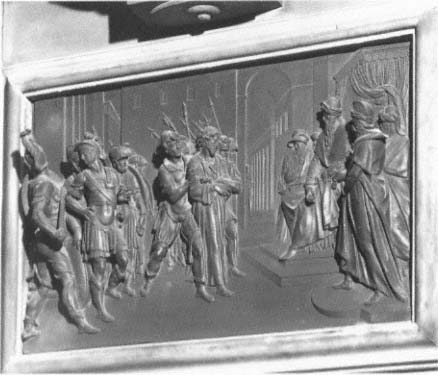
Figure 82.
Giambologna, Christ before Pilate , c. 1585–87. Bronze, 47 × 71 cm.
Soccorso Chapel, Santissima Annunziata, Florence.
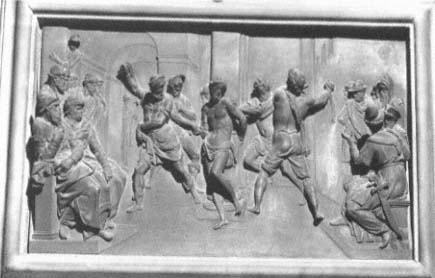
Figure 83.
Giambologna, The Flagellation , c. 1585–87. Bronze, 47 × 71 cm.
Soccorso Chapel, Santissima Annunziata, Florence.
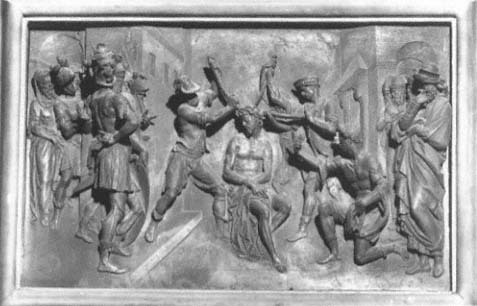
Figure 84.
Giambologna, Christ Crowned with Thorns , c. 1585–87. Bronze, 47 × 71 cm.
Soccorso Chapel, Santissima Annunziata, Florence.
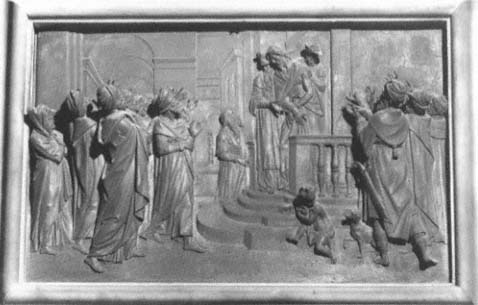
Figure 85.
Giambologna, Ecce Homo , c. 1585–87. Bronze, 47 × 71 cm. Soccorso Chapel, Santissima Annunziata, Florence.
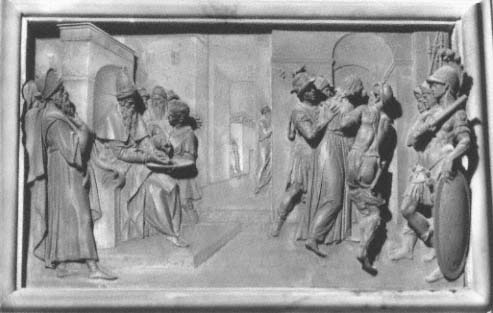
Figure 86.
Giambologna, Pilate Washing His Hands , c. 1585–87. Bronze, 47 × 71 cm.
Soccorso Chapel, Santissima Annunziata, Florence.
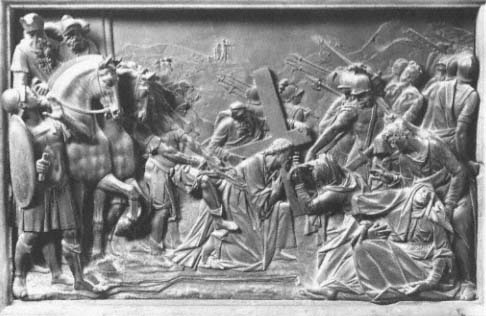
Figure 87.
Giambologna, The Way to Calvary , c. 1585–87. Bronze, 47 × 71 cm.
Soccorso Chapel, Santissima Annunziata, Florence.
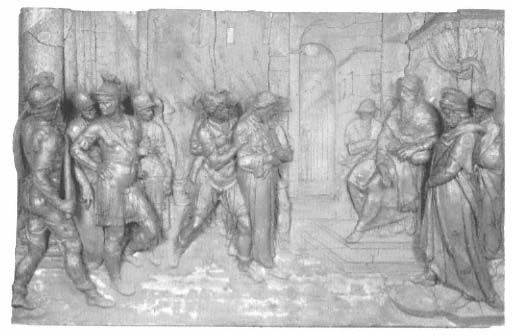
Figure 88.
Giambologna, Christ before Pilate , 1580. Wax model, 48 × 74 cm.
Victoria and Albert Museum, London.
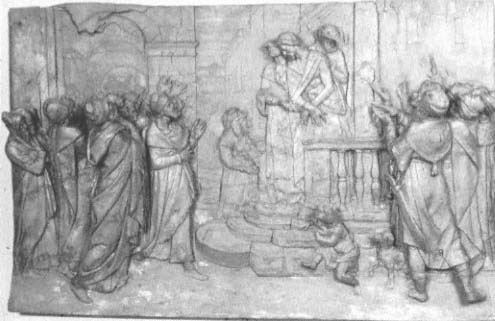
Figure 89.
Giambologna, Ecce Homo , 1580. Wax model, 48 × 74 cm.
Victoria and Albert Museum, London.
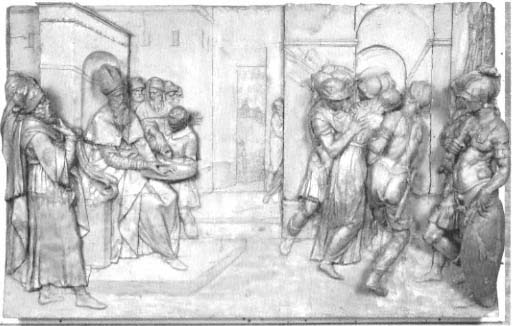
Figure 90.
Giambologna, Pilate Washing His Hands , 1580. Wax model, 48 × 74 cm.
Victoria and Albert Museum, London.
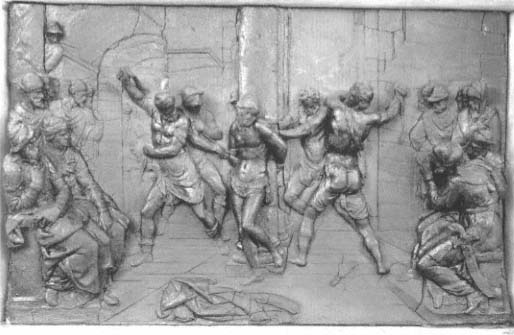
Figure 91.
Giambologna, The Flagellation , 1580. Wax model, 48 × 74 cm.
Queensland Art Gallery, Brisbane, Australia.
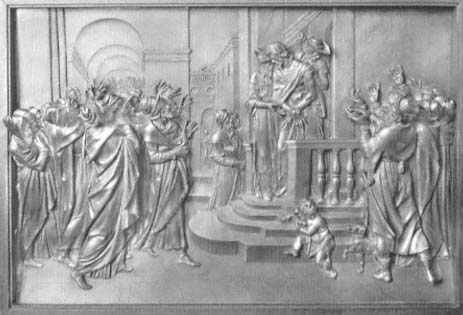
Figure 92.
Giambologna, Ecce Homo .
Bayerisches Nationalmuseum, Munich.
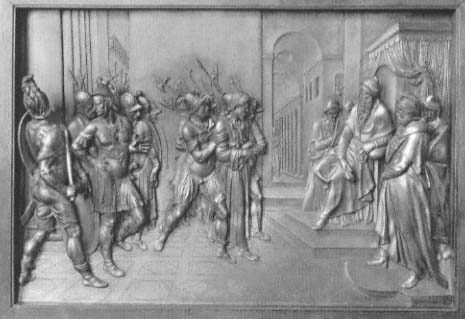
Figure 93.
Giambologna, Christ before Pilate .
Bayerisches Nationalmuseum, Munich.